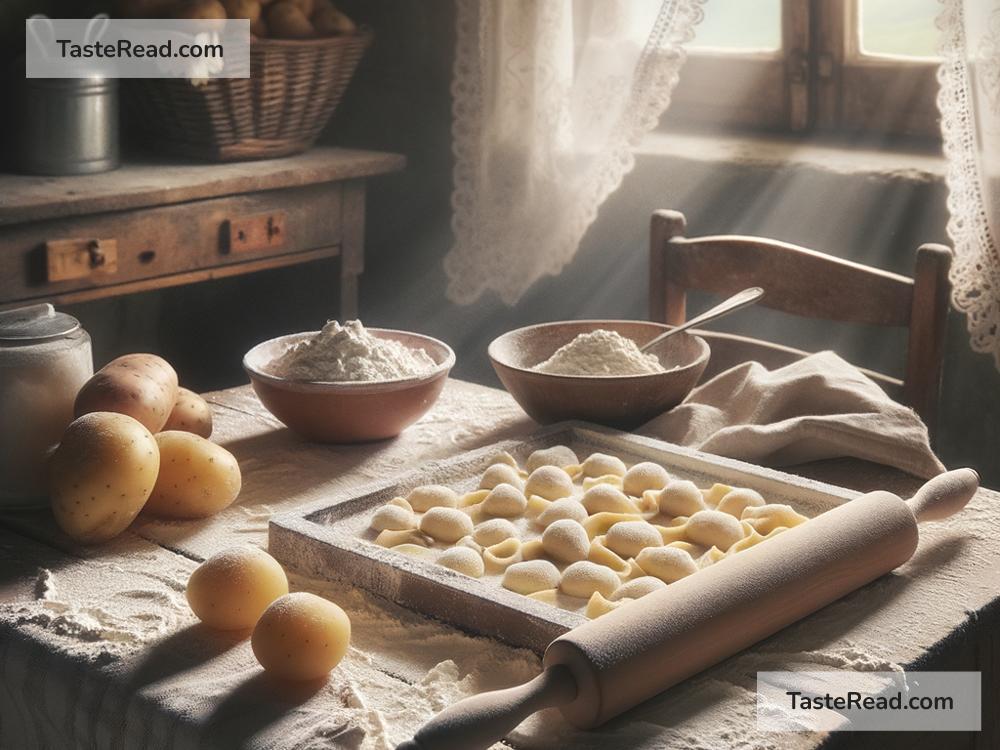The History of Italian Gnocchi
When it comes to Italian cuisine, pasta and pizza tend to steal the spotlight. But there’s another humble and beloved dish with a rich history—gnocchi. These pillowy little dumplings have been a part of Italian kitchens for centuries, bringing comfort and flavor to tables worldwide. Let’s dive into the story of gnocchi, exploring its roots, evolution, and traditions, all in plain and simple language.
What is Gnocchi?
Gnocchi (pronounced “NYOH-kee”) is a type of dumpling made from soft dough. While modern gnocchi is most commonly made with potatoes, it can also include other ingredients like flour, eggs, ricotta cheese, semolina, or even vegetables like spinach or pumpkin. Gnocchi has a tender texture, and its mild flavor makes it the perfect companion to various sauces—from buttery sage to rich tomato or creamy Alfredo.
The word “gnocchi” is believed to have come from the Italian word nocca, meaning “knuckle,” or from gnocco, meaning “lump.” Both words hint at the dumplings’ small, rounded shape.
Gnocchi’s Ancient Origins
The story of gnocchi goes far back in time, long before potatoes arrived in Europe. In ancient Rome, cooks used basic ingredients like flour and water to create dumpling-style dishes. Sometimes, these dumplings were enriched with eggs, cheese, or breadcrumbs. They were boiled, much like gnocchi today, and served with sauces or toppings.
One early version of gnocchi was similar to “pasta dumplings” made from wheat flour, known as gnocchi di pane (or bread dumplings). These were humble dishes meant to stretch simple ingredients, providing filling meals for families. This early form of gnocchi spread across Europe, taking on slightly different shapes and recipes depending on the region.
The Arrival of Potatoes
The gnocchi we know today wouldn’t exist without potatoes—but did you know that potatoes weren’t always a part of Italian cuisine? Potatoes were only introduced to Europe in the 16th century after they were brought from the Americas during the age of exploration. At first, Europeans were unsure about eating this new tuber, but by the 18th century, potatoes became a staple in many diets, especially among poorer communities.
It was during this time that Italians began using potatoes to make gnocchi. This shift was partly practical; potatoes were cheaper than wheat flour and widely available. Making gnocchi with mashed potatoes resulted in soft, tender dumplings that were both delicious and economical. Potato gnocchi quickly became a favorite in households across Italy.
Regional Variations
One of the most fascinating aspects of Italian cuisine is its regional diversity, and gnocchi is no exception. Different regions of Italy have their own unique ways of making and enjoying gnocchi. Here are just a few examples:
-
Potato Gnocchi (Northern Italy)
In northern Italy, particularly in Lombardy or Veneto, potato-based gnocchi is the most common type. It’s often served with butter, sage, and Parmesan cheese or rich meat sauces. -
Ricotta Gnocchi (Central Italy)
In regions like Tuscany and Lazio, gnocchi made with ricotta cheese instead of potatoes is popular. These tend to be lighter and softer in texture. Ricotta gnocchi is often paired with tomato-based sauces or a sprinkle of fresh herbs. -
Semolina Gnocchi (Gnocchi alla Romana)
Rome has its own twist on gnocchi, called gnocchi alla romana. This isn’t made with potatoes or ricotta but rather semolina flour, cooked into a thick dough and shaped into discs. These are baked in the oven with butter and cheese until golden and crispy. -
Pumpkin or Spinach Gnocchi (Seasonal Variations)
In some areas, gnocchi dough incorporates seasonal ingredients like pumpkin or spinach for added flavor and color. These variations are often enjoyed during autumn or special holidays.
Gnocchi Around the World
While gnocchi is deeply tied to Italian culture, it’s also enjoyed in other countries. In Argentina, gnocchi is a beloved dish, and it’s even associated with a unique tradition. On the 29th of every month, many families eat gnocchi as a symbol of prosperity, placing money under their plates as a wish for good fortune.
Modern Gnocchi and Its Popularity
Today, gnocchi is celebrated as a comfort food, both in Italy and beyond. Home cooks can make gnocchi from scratch, which is surprisingly simple, or they can buy packaged gnocchi to save time. Restaurants worldwide offer gnocchi dishes that range from the traditional to the gourmet, featuring inventive sauces and toppings.
For many, gnocchi represents Italian cooking at its best—simple, thoughtful, and satisfying. It’s a dish that turns basic ingredients into something special, reminding us that food doesn’t need to be fancy to be wonderful.
Conclusion
From its humble beginnings in ancient Rome to modern-day kitchens, gnocchi has traveled through time and culture to become one of Italy’s most cherished dishes. Whether made with potatoes, ricotta, or semolina, gnocchi reflects the heart of Italian cooking—creativity, flexibility, and a love for sharing meals with loved ones.
So the next time you enjoy a plate of gnocchi, take a moment to appreciate the centuries of history and tradition behind those soft, little dumplings. One bite, and you’re tasting more than just a dish—you’re experiencing a piece of Italy’s culinary heritage. Buon appetito!


